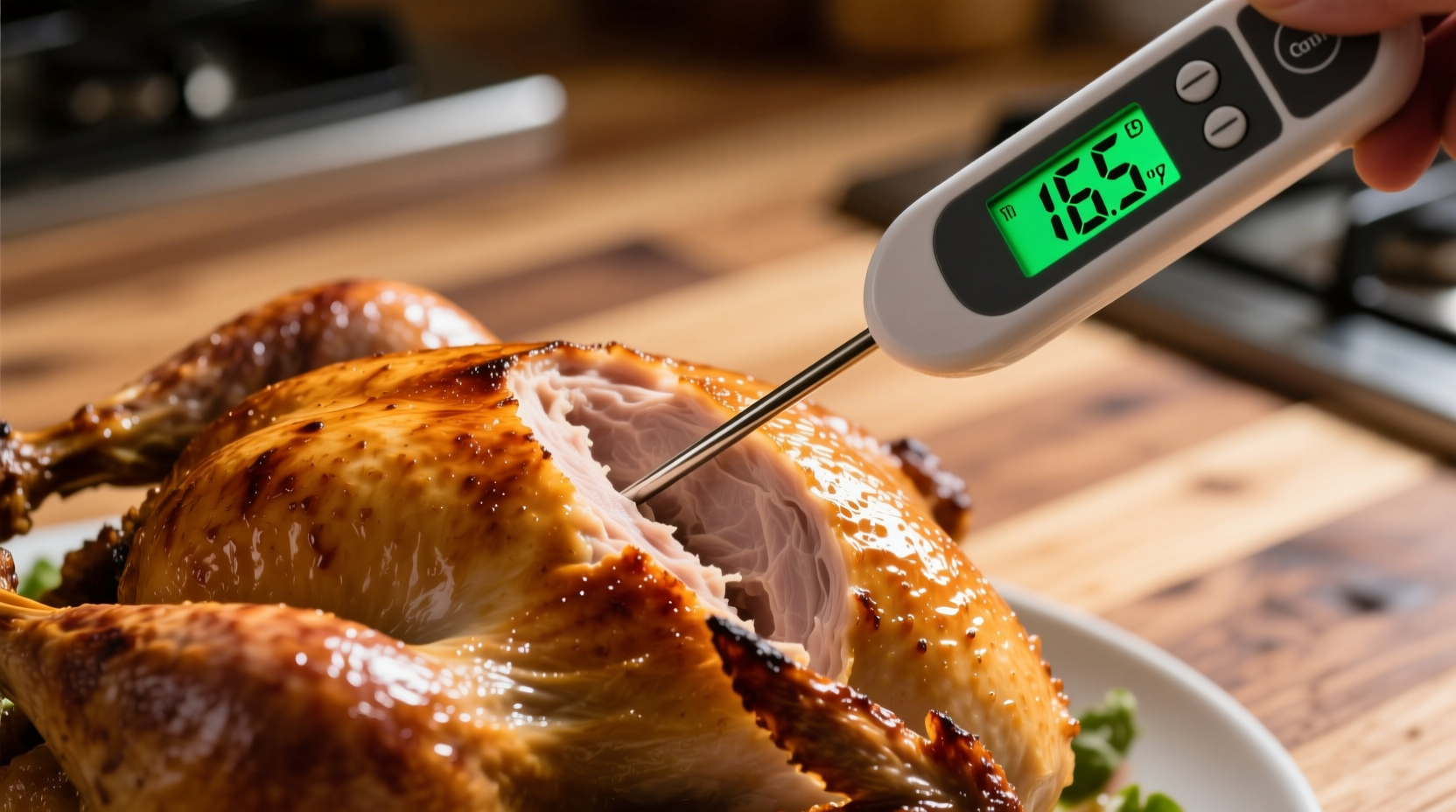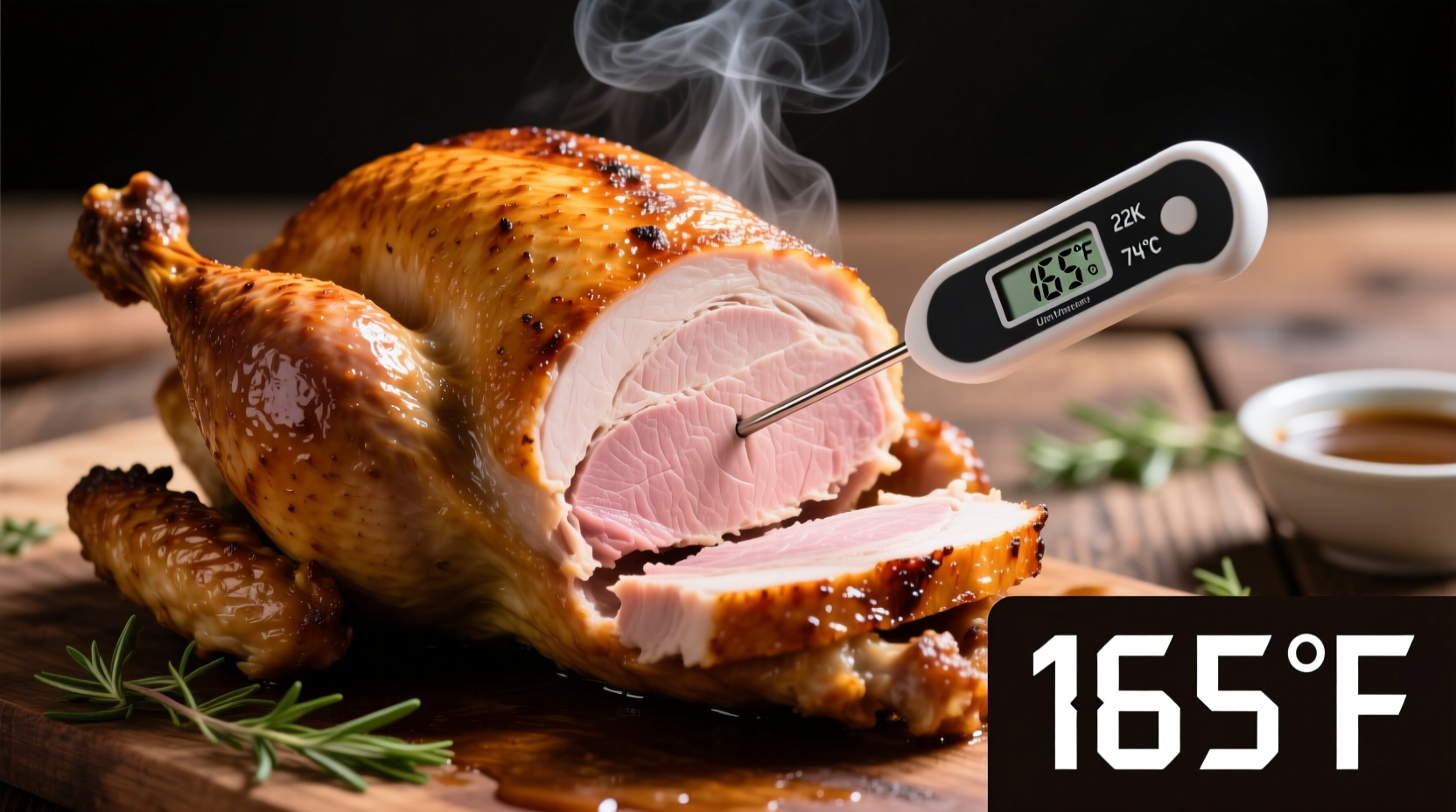Preparing the perfect turkey can make or break your holiday meal. Nothing ruins celebration momentum like food safety concerns or dry, overcooked bird. As a professional chef who's cooked hundreds of turkeys in high-pressure kitchen environments, I've seen every doneness dilemma imaginable. Let's cut through the confusion with methods that actually work.
Why Proper Turkey Cooking Temperature Matters
Undercooked turkey poses serious health risks. The USDA Food Safety and Inspection Service confirms that poultry must reach 165°F (74°C) to eliminate dangerous pathogens like salmonella and campylobacter. These bacteria can cause severe foodborne illness with symptoms appearing 6-48 hours after consumption.
Unlike some meats that can be served medium-rare, turkey contains higher levels of harmful bacteria that require thorough cooking. The USDA's Food Code specifically states: "Cook poultry, stuffed meat, and stuffing to 165°F (74°C) or higher." This isn't arbitrary—it's based on scientific evidence of pathogen destruction.
| Temperature | Bacteria Reduction | Recommended Action |
|---|---|---|
| 140°F (60°C) | Salmonella begins dying | Continue cooking |
| 150°F (66°C) | 99.999% reduction in 3 minutes | Nearly safe |
| 165°F (74°C) | Instant pathogen destruction | Perfectly safe |
The Thermometer Method: Your Most Reliable Tool
Forget guesswork—your instant-read thermometer is the turkey cook's best friend. Here's how to use it correctly:
- Choose the right thermometer: Digital instant-read models provide accuracy within 1-2°F
- Target the right spots: Insert into the thickest part of the breast and inner thigh without touching bone
- Check multiple locations: Turkeys cook unevenly—test at least three spots
- Verify final temperature: Wait 10 seconds for reading to stabilize
Many home cooks make critical errors with thermometers. Don't insert it near stuffing (which cooks slower), and never trust pop-up timers—they often trigger at 150-155°F, leaving turkey undercooked. The CDC explicitly warns that pop-up timers don't guarantee safe temperatures.

Visual and Physical Indicators (Secondary Checks)
While thermometers provide definitive proof, these secondary indicators help confirm doneness:
Clear Juices Test
Pierce the thickest part of the thigh with a fork. Properly cooked turkey releases clear juices, not pink or red. However, this method has limitations—some fully cooked turkeys may still show slight pinkness near bones due to myoglobin, a protein that retains color even at safe temperatures.
Leg Wiggle Test
Gently wiggle the turkey's leg. When fully cooked, the leg moves freely in its socket and feels loose. This works because connective tissues break down during cooking. But be careful—this test requires handling a hot bird and isn't as reliable as thermometer readings.
Meat Texture Check
Firm but yielding meat indicates proper doneness. Overcooked turkey feels dry and stringy, while undercooked feels soft and springy. This method requires experience—beginners should rely primarily on thermometer readings.
Understanding Cooking Time Variables
General timing guidelines (13-15 minutes per pound for unstuffed birds) provide rough estimates but shouldn't replace temperature checks. Several factors dramatically affect cooking time:
- Oven accuracy: Home ovens often vary by 25°F from set temperature
- Starting temperature: Refrigerated vs. room temperature turkey
- Stuffing presence: Stuffed turkeys require 30-50% more cooking time
- Rack position: Middle rack provides most even cooking
- Pan type: Dark pans cook faster than shiny ones
The Food Safety and Inspection Service emphasizes that timing alone cannot guarantee safety. A turkey might reach proper coloration while still harboring dangerous bacteria in thicker areas.
Resting Time: The Critical Final Step
Remove turkey from oven when thermometer reads 160-162°F. During the mandatory 20-30 minute resting period:
- Temperature continues rising 3-5°F (carryover cooking)
- Juices redistribute throughout the meat
- Proteins relax, improving texture
Cover loosely with foil to retain heat without trapping steam that would soften the skin. Never skip resting—it transforms potentially dry turkey into moist, tender meat.
Troubleshooting Common Turkey Problems
Pink Meat at Safe Temperatures
Sometimes turkey appears pink near bones even at 165°F. This occurs due to myoglobin reacting with oven gases and is perfectly safe. The USDA confirms: "Color does not indicate doneness." Always verify with a thermometer.
Overcooked Turkey
If your turkey exceeds 175°F, salvage it by:
- Slicing immediately and covering with warm broth
- Serving with extra gravy
- Using in sandwiches or salads where dryness matters less
Undercooked Turkey
If you discover undercooked turkey after carving:
- Slice thin pieces and return to oven
- Use microwave for quick reheating in 30-second intervals
- Finish in a covered skillet with broth
Professional Chef's Pro Tips
After years of cooking holiday turkeys in professional kitchens, here are my most valuable insights:
- Calibrate your thermometer yearly by testing in ice water (should read 32°F/0°C)
- Brine for moisture retention—helps maintain juiciness even if slightly overcooked
- Use a remote thermometer with alarm to monitor without opening oven
- Cook breast-side down for first hour to protect lean breast meat
- Check temperature early—start testing 45 minutes before expected finish time
Remember: When in doubt, check the temperature. It takes just 15 seconds and prevents potential foodborne illness that could hospitalize your guests. Properly cooked turkey should feel firm but yield slightly when pressed, with clear juices and a thermometer reading of 165°F in multiple locations.











 浙公网安备
33010002000092号
浙公网安备
33010002000092号 浙B2-20120091-4
浙B2-20120091-4